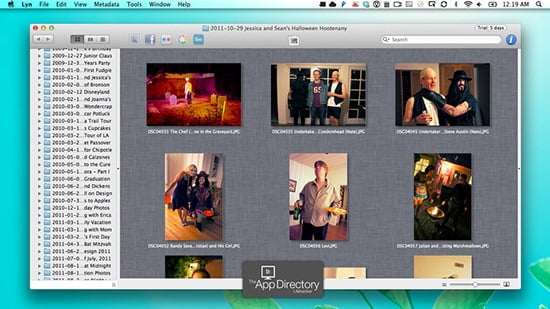

- BEST PHOTO MANAGEMENT SOFTWARE FOR MAC 10.13.16 INSTALL
- BEST PHOTO MANAGEMENT SOFTWARE FOR MAC 10.13.16 DOWNLOAD
Possible with as many systems as possible. Packaged as AppImage is intended to be as binary-compatible as
BEST PHOTO MANAGEMENT SOFTWARE FOR MAC 10.13.16 DOWNLOAD
Use CasesĪs a user, I want to go to an upstream download page, download an application from the original author, and run it on my Linux desktop system just like I would do with a Windows or Mac application.Īs a tester, I want to be able to get the latest bleeding-edge version of an application from a continuous build server and test it on my system, without needing to compile and without having to worry that I might mess up my system.Īs an application author or ISV, I want to provide packages for Linux desktop systems just as I do for Windows and OS X, without the need to get it 'into' a distribution and without having to build for gazillions of different distributions.ĪppImage is intended to be a very simple format that is easy toĪppImage is a format for binary software distribution. The README.md of the AppImageKit-project offers a lot additional informations like Use cases, the problem space and objectives. The program, but not having to extract the program or modify the Is a compressed image which is temporarily mounted to allow access to One can use a AppImageįile even if they are not a superuser, or they are using a live CD.ĪppImage files are often simpler than compiling and installing anĪpplication, as no installation actually took place. It is similar to "application virtualization".
BEST PHOTO MANAGEMENT SOFTWARE FOR MAC 10.13.16 INSTALL
Install software in the traditional sense (i.e., it do not put filesĮach one is self-contained: it includes all libraries the applicationĭepends on and that are not part of the base system. Included in the targeted base operating system(s).ĪppImage (and the predecessors klik and portablelinuxapps) do not Other words, each AppImage has no dependencies other than what is EveryĪppImage contains an app and all the files the app needs to run. The key idea of the AppImage format is one app = one file. You can find some general informations about appImage here. You can make the appImage executable as follows: chmod a+x exampleName.AppImage Go to and click on the link to download gfortran-6.1.pkg.I am quoting the appImage project page here:ĪppImages can be downloaded and run without installation or the need.GNU Fortran (a compiler for the Fortran language): Go to and click on the link to download clang-6.0.0.pkg.The installer will open and lead you through installation.Double-click on XQuartz.pkg in that window. A disk image will mount (looks like a new Finder window opening up).When the file has downloaded, find it in your Downloads folder and double-click it.Go to and click on the link to download XQuartz-2.7.11.dmg.XQuartz (allows you to use packages that depend on the X11 windowing system, a UNIX thing):


If you want, you can continue on to install these additional tools (or you can wait until you run into trouble later!). However, it's increasingly necessary to have some R developer tools installed as well as R itself, since getting the latest versions of popular packages may require you to compile them from source. Now you've done the basics! Hopefully this is enough for your DataCamp courses. When you're all done, it's OK to delete R-3.5.1.pkg, if you want.The installer will lead you through the installation process.Double-click on it to open the R installer. Go to your Downloads folder and find the file called R-3.5.1.pkg.It will most likely wind up in your Downloads folder. Click on the link that says R-3.5.1.pkg - the R installer will begin downloading.I know the R for Mac download page isn't exactly beginner friendly! Here are some step-by-step instructions:


 0 kommentar(er)
0 kommentar(er)
